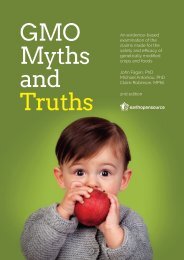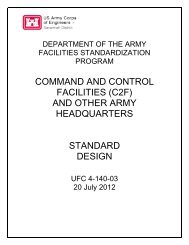1923%20Memoir%20on%20Maps%20of%20Chinese%20Turkistan%20by%20Stein%20s
1923%20Memoir%20on%20Maps%20of%20Chinese%20Turkistan%20by%20Stein%20s
1923%20Memoir%20on%20Maps%20of%20Chinese%20Turkistan%20by%20Stein%20s
You also want an ePaper? Increase the reach of your titles
YUMPU automatically turns print PDFs into web optimized ePapers that Google loves.
Chap. IV] NOTES ON SHEET NO. 32 $9<br />
The aroa represented in this sheet com- of tlris Lop deeert route and the tt~[)ogrsphiprises<br />
two distinct regions. lu the north cal facts voneerning it, as elucidated in the<br />
thore extend tho low desert ranges and the course of our surveys, have been set forth in<br />
plateaus of tho Knruk-tigh ; irl tho south, Se~inditr, ii. pp. 553 scly. I('<br />
the great salt-cncrusted basin occupied in The caravan track along the southern<br />
prehistoric times by the Lolj sea, together shore of the dried-U~J lake bed, is described<br />
with its desolate shores of bare gravel or in Deserl Cntbay, i. ~IJ. 520 sqq. lg'or a full<br />
clay. 130th regions are utterly lifeless, except account of the historical topography of thin<br />
for the occasional passaEe of wild camels. interesti~lg route, the fiamo which Hsiian-<br />
Their character is illustrated by the fact that tsang (.\.u. 645) and hlarco Pol0 followed,<br />
apart from the wells of Kum-kudnk there is see Serintlzo, Chapter xrv. see. i-iii (ii. pp.<br />
to be found no drinkable water in this vast 549 sclq.). A preliniinary report on my<br />
area, nor living vegetation, except in scanty explorations amoug the easternmost ruins of<br />
patches close to the rare salt springs in the the Lon-Ian territory (A. 3), and on the<br />
north antl in narrow strips along the sllores jonmey by which I traced the earliest Chinese<br />
of the great easter~~ bay of the ancient lakebed<br />
(C,D.4). '!'<br />
route from Tan-huang to Loo-Ian across the<br />
salt-encri~sted Lop lake bed, is contained in<br />
While the Kuruk-tigh region llere Grogroph. Jo~irrrul, 1916, slviii. p1). 126<br />
sho\vn has never known human life escept sqq. ; Geqqraplticul! Heriezo (New York),<br />
for rare visits of hunters in its western l~nrt, 1921, is. pp. 22 sqq.<br />
distinct historical interest is imparted to tlie Cori.ections. A. 1. Delete the latitude<br />
lake-basin by the fact that across its wastes statior~ symbol from Bir-atai-bulak, Camp<br />
of hard salt-crust antl alon: its equally 1t~1,ren 270.<br />
shores of gravel and wind-el,oded clay tllere C. 3. For Achchik-bulak the height<br />
led the route which froni the ~econd century 2270 (ancroid ; of 1913) ought to beadopted.<br />
B. c. onwards formed the earliest, and for a D. 4. For Iium-kuduk, Camp 52, the<br />
long time the chief, line of comn~unication height 2245, observed by mercurial barofrom<br />
China into the Tarim basin. The<br />
complete ' desiccation ' of the Lou-Ian terrimeter,<br />
ought to have been shown. Delete<br />
height 2750 (aneroid) at adjoining Camp 95<br />
tory some four centuries later finally closed and height 2730 (aneroid) at Camp 94.<br />
it to traffic. The Chinese historical notices<br />
Astrono~nicalZy observeil Iatit7ides.<br />
3913-15 Kauriik-bulak, Camp 88 (near spring; A. 2)<br />
Camp 92, southernmost Kurulr-tigh (D. 3)<br />
Palgan-bulak, Camp 260 (near spring ; A. 8)<br />
Camp 266, S. of Achi-tBgh (B. I ) ...<br />
NOTES ON SHEET No. 33 (LOWAZA, BASH-KuRGHBN)<br />
The two routes from which all the<br />
ground shown in this sheet was s~uveyed, are<br />
the only lines of communication now practicable<br />
between Tun-hoang and tlie Lop region.<br />
They mere followed both on tlre second and<br />
third espeditions, the latitude obserrations<br />
taken on the latter (see below) making it<br />
possible to lay down the route lines more<br />
correctly than before. The traverses of both<br />
routes are adjusted on the positions ad0~te.1<br />
for 1Iir;in and An-lrsi. In the case of the<br />
former place, it must be noted that reconsi-<br />
deration of R.B. La1 Singh's triangulation<br />
in 1921 brings its longitude about 2 minutes<br />
to the vest of the one shorrn in Sheet No.<br />
30. B 2.<br />
The route shown in the north-western<br />
portion of the sheet forms part of the old<br />
'"0 vegetntion of any kind, whether living or crossed some 120 miles of the snlt-encrnatecl sen-bed<br />
dead, wns met with by It. B. Lil Singh on his tire nnd its sborcs to Carup cvi on the sl~ore of the abovelong<br />
mnrches in the nnexplored Knrnk-tlgh between nnmed bay (D. 4).<br />
Camps 262-267. I mgself in Febrnnrj, 1914, left lo For detnils of the ancient topogrnphy of thin<br />
bel~ind the Inst. remains of dend vegetntio~l nenr tbe ronte ns trnced in the course of my surveys of 1914,<br />
ensternmost rain (L. J.) of ancient Lou-Inn (A.3), and<br />
(lid not come upon any living vegetation until 1 hnd<br />
cf. also Seriiidia, i. pp. 311 sq., 423 sqq.






